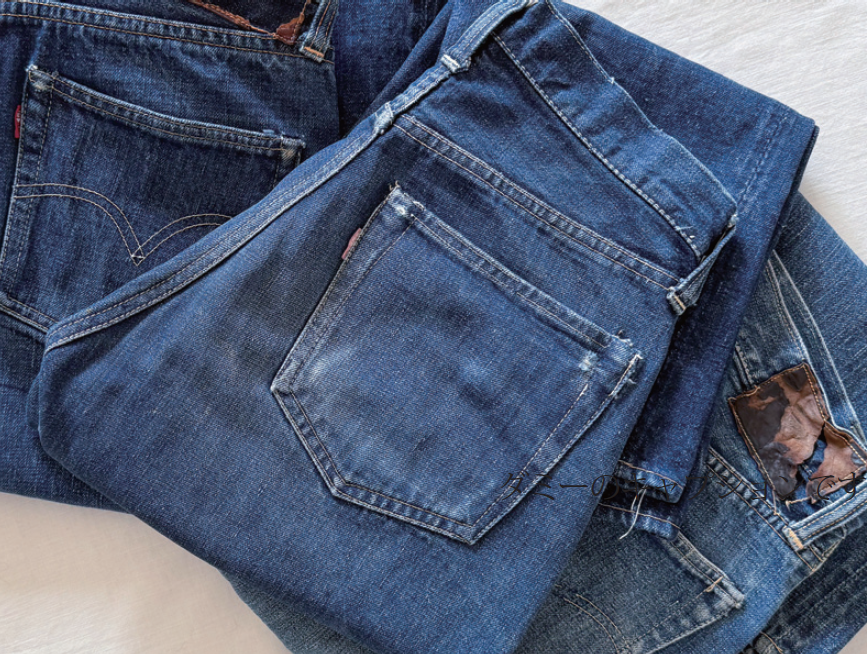Disclaimer: machine translated by DeepL which may contain errors.
Published in The Rigakubu News May 2025
Fossils and Vintage Denim
Tatsuya Hirasawa, Associate Professor, Department of Earth and Planetary Science

When I was 12 years old, I decided to become a scientist. At the time, many books on dinosaur research were published due to the influence of the movie Jurassic Park (1993), and I was knocked out by the fun and romance of the subject. I was knocked out by the fascination and romance of dinosaurs and learned from those books that there was a way of life in which one could make a career out of it. Since then, I joined the track team to train my body for my future field work, and I became a scientist by training my brain as well. That's exactly what I'm talking about.
In the same way, there is something that I met when I was 12 years old that I have not yet been able to get rid of. It is the exploration of clothing, especially vintage clothing of a particular genre, such as workwear and military clothing.
Since I was about 12 years old, when I decided to become a scientist, I stopped by bookstores every day to pick out books in order to acquire various scientific knowledge and ways of thinking, but I was also in a period when I wanted to be popular, so I checked out all the fashion and culture magazines in the magazine section. The fashion of the time was vintage clothing fashion, with a focus on vintage denim, and in many cases, the majority of the magazine pages were devoted to detailing, including how to tell the age of a pair of jeans. This sparked my inquisitive mind. I enjoyed absorbing such knowledge and systematizing it in my mind. In fact, exploring the history of vintage vintage clothing is much like trying to unravel the history of evolution from fossils.
Workwear such as jeans and military clothing made for use on the battlefield are durable, and there is often no problem even with rough treatment of vintage clothing. In fact, worn-out, faded, and damaged clothes are more powerful and give off a better atmosphere. On the other hand, if you open a book on dinosaur research, you will find that the scientists excavating fossils are dressed in jeans and other workwear. In old photos, scientists are wearing workwear that is now vintage.
Here they are. Two pursuits that I'm really into can go hand in hand nicely. After realizing this, I began to yearn for a lifestyle of research dressed in rough and tough clothes. It was also a symbol of my determination not to choose a job or a life in which I would have to wear a suit or neat, luxurious clothes. Thus, I continued my exploration of clothing as part of my quest to become closer to the ideal scientist.
Some might say that we should focus on our research and not on our clothes. There are well-known examples of people whose work involves research and creativity, such as Apple's Steve Jobs, who always wears the same clothes.
This is the way workwear is supposed to be worn. However, as I continue my exploration of clothing as a hobby, I find that I am tempted to try on a variety of outfits. I want to arrange the way I wear clothes according to the times. I feel like I'm wasting time thinking about it, but I tell myself that if I can change my mood by doing so, it will have a positive effect on my research.
 A pair of jeans made by Levi Strauss & Co. in the 1950s. All three pairs were acquired more than 20 years ago, but I still never get tired of them.
A pair of jeans made by Levi Strauss & Co. in the 1950s. All three pairs were acquired more than 20 years ago, but I still never get tired of them.The Faculty of Science News collects essay submissions. We welcome all submissions, regardless of whether they are self-recommended or not. We especially welcome submissions from Faculty and graduate students. However, the Communications & Public Relations Committee reserves the right to decide whether or not to publish your essay.Submissions should be sent to rigaku-news[@]adm.s.u-tokyo.ac.jp.


